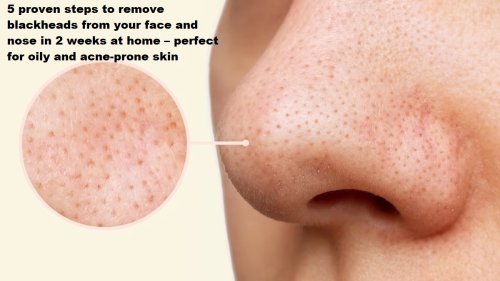Can salicylic acid be used with retinol?
Wondering if salicylic acid can be used with retinol? Learn how to safely combine these powerful skincare ingredients, prevent irritation, and create an effective routine for clearer, healthier skin.

Can salicylic acid be used with retinol?
It’s common to wonder, “Can salicylic acid be used with retinol?” If this question has been on your mind, take a moment to read through this post to learn how to safely combine these two powerhouse ingredients.
Both salicylic acid and retinol are highly effective for targeting pimples and preventing breakouts. They work partly by exfoliating the skin, removing the buildup of dead cells on the surface. However, when not used properly, they can cause significant skin irritation.
So, can you and should you use them together in your skincare routine? The short answer is yes. But to avoid potential irritation, it’s crucial to combine them correctly. In this blog post, we’ll cover exactly how to do that, how to pick the right products, and the risks you should keep in mind.
How do you combine salicylic acid and retinol?
Follow these steps to make the most of both ingredients while keeping irritation to a minimum:
1. Begin with one product first
It doesn’t matter whether you start with salicylic acid or retinol. If you choose retinol, apply it at night since certain formulas can be deactivated by UV light. If you start with salicylic acid, morning use is a good option.
2. Introduce it gradually
To reduce irritation, begin by applying your first product every other day. Once your skin adjusts, you can increase usage to daily.
Also Read: Niacinamide vs Vitamin C: Can They Work Together?
3. Allow your skin time to adapt
Adjustment can take several weeks. You’ll know your skin has adapted when there’s no persistent dryness, redness, or irritation.
4. Incorporate the second product slowly
When adding the second ingredient, follow the same approach—start every other day and increase gradually. If daily use causes irritation, stick to every other day.
Also See: Niacinamide in Skincare - 7 Powerful Reasons to Add It to Your Routine
5. Split usage between morning and evening
Since retinol is best at night, use salicylic acid in the morning to reduce the risk of over-irritation.
6. Monitor your skin’s reaction
If redness, dryness, or irritation persists, reduce frequency, skip days, or switch to a lower concentration.
Also Check: Can salicylic acid be used every day?
Example of Combining Salicylic Acid and Retinol
Here are the examples of Combining Salicylic Acid and Retinol
Morning Routine
- Cleanse your face using a salicylic acid-based cleanser.
- While your skin is slightly damp, apply a moisturizer.
- Finish with a broad-spectrum sunscreen.
Night Routine
- Cleanse your face with a gentle, non-irritating cleanser.
- Apply a small amount of retinol to dry skin and allow it to fully absorb.
- Follow with a moisturizer. (If your skin is very dry, you can apply moisturizer before retinol.)
Benefits of Salicylic Acid
Salicylic acid is a type of beta-hydroxy acid (BHA) commonly used to address various skin concerns such as acne, warts, and psoriasis. It acts as an exfoliant by loosening and removing dead skin cells that can clog pores and trigger breakouts. Additionally, it possesses anti-inflammatory properties.
At higher concentrations, salicylic acid can serve as a chemical peel to treat:
- Sun damage, including fine lines and wrinkles
- Melasma
- Sunspots
- Post-inflammatory hyperpigmentation
Benefits of Retinol
Retinol, a form of vitamin A, is commonly found in over-the-counter skincare products, while stronger retinoids like tretinoin (Retin-A) are prescription-only. Adapalene (Differin) is an exception and is available OTC.
Retinol and other retinoids provide a range of skin benefits. They are effective in treating and preventing various types of acne and can also help reduce signs of aging by:
- Smoothing fine lines and wrinkles
- Refining skin texture through gentle exfoliation
- Evening out skin tone and fading dark spots
- Stimulating collagen production
Choosing a Salicylic Acid Product
Salicylic acid comes in various strengths and formulations over the counter. Since it can cause irritation initially, it’s best to start with a low concentration and increase gradually. Tips for selecting the right product include:
- Begin with a low concentration, such as 0.5%
- For sensitive skin, use a cleanser or toner rather than a leave-on product
- Look for formulations that include soothing ingredients, like hyaluronic acid
Choosing a Retinol Product
When starting retinol, begin with a low concentration, around 0.2%, and gradually increase as your skin adapts. Retinol comes in various formulations depending on your skin type and goals:
- Dry skin: Creams or emollients
- Oily skin: Gels or serums
- Combination skin: Serums or lightweight creams
What to Avoid While Using Retinol
Since retinol can be irritating, especially when first introduced, avoid other potentially harsh products until your skin adjusts. This includes salicylic acid, facial scrubs, and benzoyl peroxide.
The Bottom Line
Retinol and salicylic acid are both powerful ingredients for treating acne and other skin concerns. They work by exfoliating the skin, so using them incorrectly together can lead to irritation, redness, and flaking.
It is possible to combine these ingredients safely, but you should do so gradually. Start with low concentrations and let your skin adjust to one product before introducing the other. With patience and careful observation, you can develop an effective routine tailored to your skin.
Share
What's Your Reaction?
 Like
0
Like
0
 Dislike
0
Dislike
0
 Love
0
Love
0
 Funny
0
Funny
0
 Angry
0
Angry
0
 Sad
0
Sad
0
 Wow
0
Wow
0














